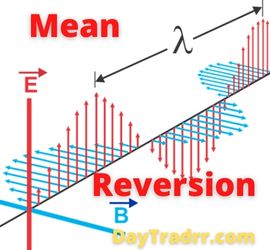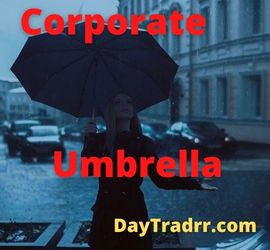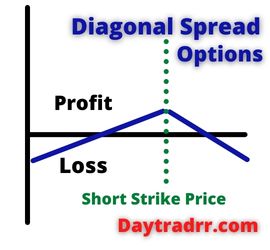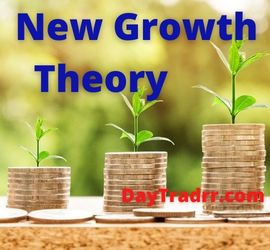Mean Reverting – What Is Mean Reversion?
 Mean reverting, reverting to the mean, or mean reversion are all phrases used to describe a statistical theory that is employed in finance. It implies that asset price volatility and historical returns will ultimately revert to the dataset’s long-run mean or average level. This mean level can exist and can be applied in a variety of circumstances. For example, economic development, stock volatility, a firm’s price-to-earnings ratio (P/E ratio), and the average return of an industry.
Mean reverting, reverting to the mean, or mean reversion are all phrases used to describe a statistical theory that is employed in finance. It implies that asset price volatility and historical returns will ultimately revert to the dataset’s long-run mean or average level. This mean level can exist and can be applied in a variety of circumstances. For example, economic development, stock volatility, a firm’s price-to-earnings ratio (P/E ratio), and the average return of an industry.
The larger the divergence from the mean, the more likely the next movement of asset values will be in the direction closer to the mean. In other words, an extreme event can increase or decrease a stock’s momentum. However, it is likely to be followed by a less dramatic event that causes significantly less volatility and is in the direction of the stock’s long-term average.
Mean Reverting – The Basics of Mean Reversion
Reversion to the mean is the process of returning to a condition more in-line with the long-run average state. The theory suggests that a level that deviates significantly from the long-term norm or trend will revert to its recognized state or secular trend. This notion has given rise to a plethora of investing techniques. For example, acquiring or selling stocks or other securities whose recent performance deviates significantly from their historical averages.
However, a shift in returns might simply indicate that a firm no longer has the same prospects it previously did. In that case, mean-reverting is less likely. As a result, mean reversion does not just include percentage returns and prices. Interest rates and even a company’s P/E ratio can be affected by this phenomenon. Normal growth or other variations are assumed to be part of the paradigm. Therefore, the theory of mean reversion focuses on the reversion of only very dramatic changes.
Investors understand that unexpected highs or lows might actually signify a shift in the character of the stock. This shift can be the result of events such as positive or bad news. For example, consider the news that Apple recently introduced a new iPhone model is revealed to the public. Prices are likely to experience a positive shock for a period of time before reverting to pre-shock values. The time to reversion is the amount of time it takes for the stock to return to more normal long-term levels. In general, normal pattern returns are not always assured. On the other hand, assets can nevertheless exhibit mean reversion in the most severe conditions. Nonetheless, like with any occurrence, it is impossible to predict how the news will affect market activity for securities over the longer term.
Using the Mean Reversion Theory
The mean reversion hypothesis is applied as part of a statistical examination of market circumstances. Therefore, it can be included in a trading strategy. It is perfectly suited to the concepts of buying low and selling high. The objective is to detect anomalous activity that will, presumably, revert to a more normal pattern. Mean reversion has also been used in options pricing. It helps to explain the finding that the volatility of an asset will fluctuate around some long-term average. Many options pricing models make the fundamental premise that an asset’s price volatility is ultimately mean reverting.
Typically, high-volatility periods are followed by low-volatility ones, and vice versa. Using mean reversion to discover volatility ranges in conjunction with forecasting methodologies. Ultimately, it helps investors sift through background noise to identify meaningful trends from temporary blips. Mean reversion trading in stocks seeks to profit from severe fluctuations in the pricing of specific investments. The expectation is that it will eventually revert to its prior condition. This principle may be applied to both buying and selling. This is because it allows a trader to profit from unexpected upswings and save from unusual lows.
The belief is that stock prices will eventually return to their long-term average. As a result, if there is a price shock or unanticipated surge, either up or down, prices will ultimately recover or revert to their pre-shock level. The time it takes to revert is also known as the time to reversion. If the process is particularly persistent, reverting to the mean may take a long time. The essential distinction between a mean-reverting and a random-walk pricing process is that the random-walk price process does not return to the previous level after the shock.
Limitations of Mean Reversion
Unexpected highs or lows might also suggest a shift in the usual and a new level of “normal“. As a result, a return to the former level is not guaranteed. For example, such events might include but are not limited to new product introductions or technology advances. On the downside, significant drops could be the result of recalls and lawsuits. However, even in the most catastrophic occurrence, an asset might still undergo mean reversion. However, as with most market activity, there are few assurances regarding how specific occurrences will or will not influence the general perceived value of specific assets.
Mean reversion is the very simple idea that “what goes up must come down.” The stock market’s day-to-day fluctuations are chaotic and unpredictable. However, the long-term stock market returns tend to follow relatively predictable rising trends. Deviations from the trend can last years, if not decades. As a result, this is not a beneficial short-term trading method. Rather, it is a valuable indicator of overall market value in comparison to recent history.
Efficient Market Theory
Many people think that markets reflect all available information. As a result, it is difficult to outperform the markets unless insider knowledge or an unlawful competitive advantage is offered. For example, if a stock rises by 30%, there should be a reason for that upward trend. The stock may climb sooner than expected, maybe owing to previously revealed favorable news. As a result, many individuals think that such price movements should not be feasible prior to the announcement unless there is a particular, factual reason.
Mean Reverting – Final Words
Mean reversion is an important market concept to consider, but it does not guarantee effective trading. While prices do tend to return to the mean over time, no one can predict exactly when that will happen. Prices may continue to deviate from the mean for a longer period of time than anticipated. Also, the trend direction, as well as the amount or amount of price movement, may alter. Just because a price has risen does not guarantee that it will return to the mean. For example, the mean may also climb to match the price resulting in a new normal level. Because of these uncertainties, most professional traders follow tight risk-management processes. They can choose an exit point at which their position will be closed if the price does not move in the predicted direction. This allows following technical indicators while minimizing potential losses to the greatest extent feasible.
Up Next: What Is a Corporate Umbrella?
 A corporate umbrella is a strategy by large, successful brands to arrange smaller brand names under a single, unified corporate structure. The parent company is generally a large, successful brand name that oversees smaller companies belonging to the same corporation. The parent company adds structure and credibility to the smaller brands without needing to make day-to-day organizational decisions regarding products and services.
A corporate umbrella is a strategy by large, successful brands to arrange smaller brand names under a single, unified corporate structure. The parent company is generally a large, successful brand name that oversees smaller companies belonging to the same corporation. The parent company adds structure and credibility to the smaller brands without needing to make day-to-day organizational decisions regarding products and services.
The umbrella structure permits the subsidiaries to differentiate themselves from the parent corporation. Yet, all the while benefiting from the financial backing and assistance of a much bigger organization. Many multinational corporations use a corporate umbrella approach to diversify income streams and maximize profitability. Consider Procter & Gamble (PG). They distribute a variety of items under several brand names. For example, Bounty paper towels, Crest toothpaste, and Downey detergent. Each name brand functions independently of Proctor & Gamble while yet being a part of the greater corporation.




